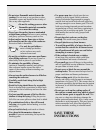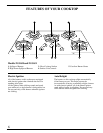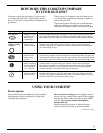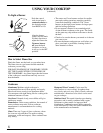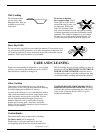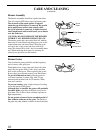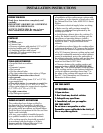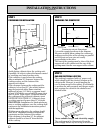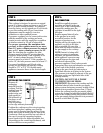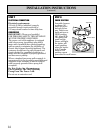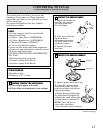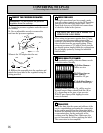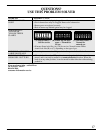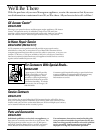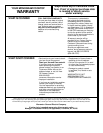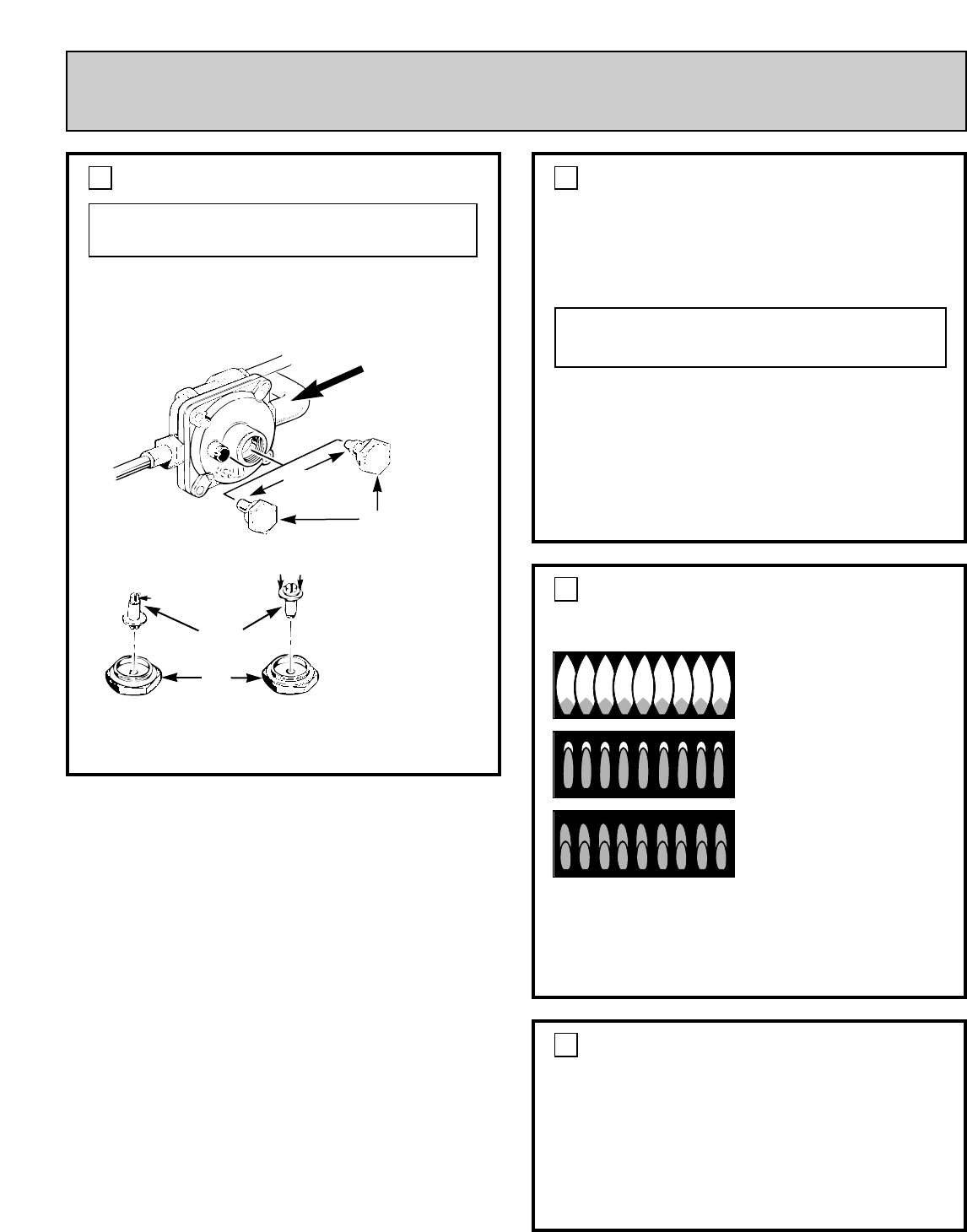
16
CHECK FOR LEAKS
When all connections have been made, make
sure all cooktop controls are in the OFF position
and turn on the main gas supply valve. Use a
liquid leak detector at all joints and connections
to check for leaks in the system.
When using test pressures greater than 1/2 psig
to pressure test the gas supply system of the
residence, disconnect the cooktop and individual
shut-off valve from the gas supply piping. When
using test pressures of 1/2 psig or less to test the
gas supply system, simply isolate the cooktop from
the gas supply system by closing the individual
shut-off valve.
CAUTION: DO NOT USE A FLAME TO
CHECK FOR GAS LEAKS.
5
CHECK QUALITY OF FLAMES
The combustion quality of burner flames needs
to be determined visually.
(A) Yellow flames—
Call for service
(B) Yellow tips on
outer cones—
Normal for LP gas
(C) Soft blue flames—
Normal for natural gas
If burner flames look like (A), call for service.
Normal burner flames should look like(B) or
(C), depending on the type of gas you use.
With LP gas, some yellow tipping on outer
cones is normal.
6
FINAL STEPS
Fill in the date plus the name and address of the
service organization performing the conversion
in the spaces provided on the conversion label.
Remove the backing from the label and stick it in
a convenient place on the underside of the
cooktop near the Rating Plate. Make sure the
area is clean and dry before applying the label.
The conversion is now complete.
7
CONVERT THE PRESSURE REGULATOR
1. Locate the pressure regulator under the rear of
the cooktop.
2. Use an adjustable wrench to remove the
nut from the pressure regulator.
3.Insert the LP Adapter into the nut.
4. Reinsert the assembly into the regulator and
attach the tie-on label to the regulator using the
string provided.
WARNING: Do not remove the pressure
regulator from the cooktop.
4
CONVERTING TO LP GAS
or Converting Back to Natural Gas from LP
LP
Nut
Gas Flow
into Range
NAT
LP Adapter
NAT
LP
Adapter
Nut
LP



